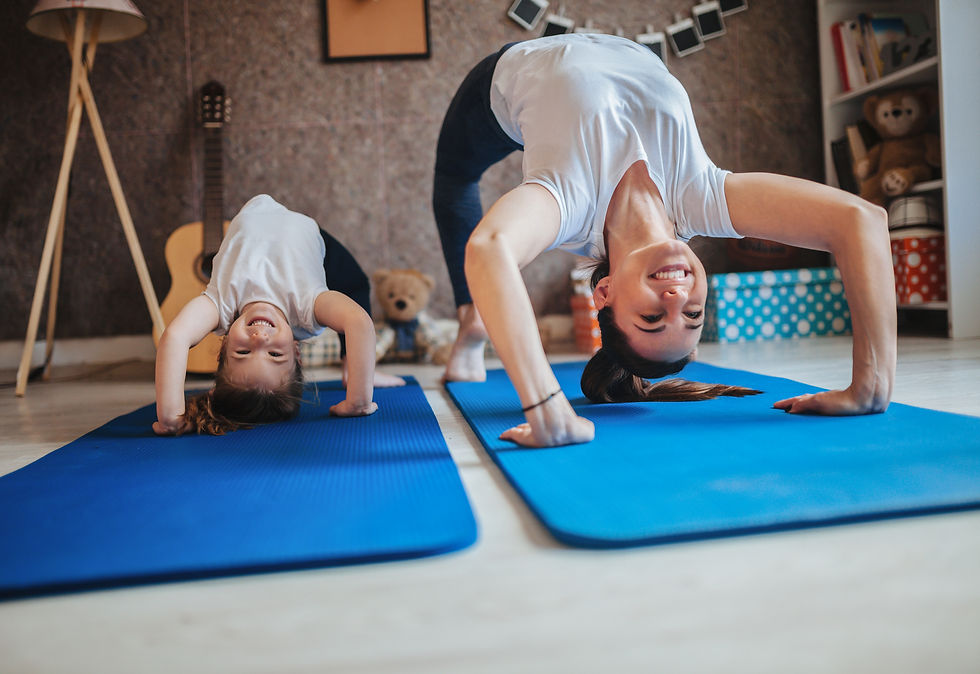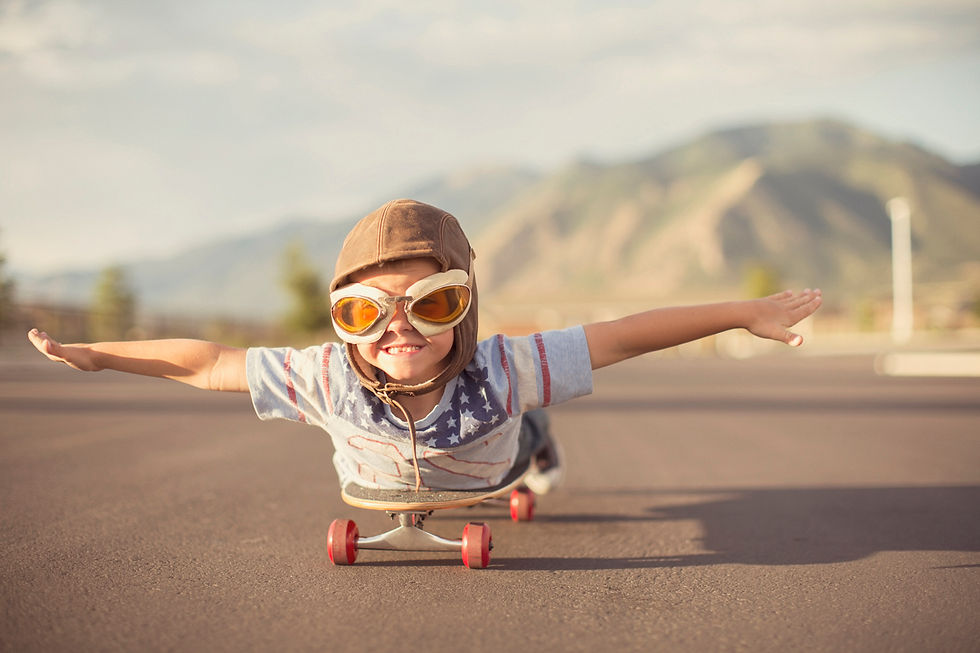The Vestibular System and Activities You Can Do at Home
- Susan Donohoe
- May 6, 2020
- 3 min read
Updated: Mar 31
Simply put, Sensory Integration or Sensory Processing is the neurological process that organizes sensory information received from one's own body and the environment making it possible to interact and respond effectively. Sensory Processing is the relationship between the brain and behavior.

There are 9 sensory systems:
Visual/Eyes
Auditory/Sound
Tactile/Touch
Taste
Smell/Olfactory
Vestibular
Proprioceptive
Gustatory
Interoception
Our focus for these activities will be the Vestibular System
Simply put, the Vestibular System is a sensory system responsible for providing our brain with information about motion, head position, gravity, and spatial orientation, It is also in motor functioning, allowing us to keep our balance, stabilize our head and body during movement, and maintain posture.

The Vestibular System includes your inner ear, which is mainly responsible for sound detection and balance, your eyes, and your Proprioceptive System which manages muscle and joint responses. All of these mechanisms provide input to your brain. Information is then processed and your brain provides a behavior reaction. This drives your alertness, motor, and language responses. It is the foundation for development of all other systems.
Due to the complex nature of connections in the Vestibular System, you may see some of the following behaviors if this system is underdeveloped. In cases of underdevelopment, the guidance of an experienced Sensory Occupational Therapist should be applied.

Poor listening skills
Poor balance
Poor posture
Poor bilateral coordination
Poor motor control
Poor visual motor control
Decreased confidence
Increased anxiety with movement
Poor social skills
Poor communication skills
Poor core strength, W-sitting
Poor handwriting
Poor organization
Motion sickness
Difficulty sitting still
Difficulty learning new motor skills
Clumsiness
Claustrophobia
Trouble in crowds
Difficulty reading
Children may be avoiders or seekers of Vestibular Sensory input. Seeking is not necessarily a bad thing unless the child is over-seeking so often it interferes with their daily activities.
Activities to help provide valuable input through the Vestibular Sensory System
Making an obstacle course with several of these activities can make for a really fun afternoon!

Jump rope
Pogo stick
Bike riding
Hiking
Seek and find
Scavenger hunts
Apple picking
Chores
Bubbles
Wiffle ball
Basketball
Cornhole
Ladder ball
Scooters
Gardening
Swinging sitting, on stomach
Rock climbing
Swimming
Cartwheels
Somersaults
Ride in a wheelbarrow
Vertical artwork
Rolling
Crawling
Spinning
Hopping
Trampoline
3 legged races
Sac races
Wheelbarrow races
Hopscotch
Sidewalk chalk
Velcro ball toss
Badminton
Change of direction activities
Throwing activities
Bowling
Puzzles
Yoga poses
Flying a kite
And so many more!
The fun ideas and experiences are endless!
PLEASE NOTE***
If your child has a serious reaction to any movement (such as spinning, swinging, rolling, or any motor movement) stop that movement immediately. Many children who have an underdeveloped Vestibular System may feel sick, throw up, feel faint, etc. Additionally, if your child has a history of seizures please talk to your physician or doctor before doing any new physical movements with your child. Some movements can cause seizure activity depending on the child, so please be aware of that.
We highly suggest avoiding spinning activities with children who have underdeveloped Vestibular Systems. Spinning effects need to be understood, controlled, and supervised with children who have sensory differences. The effects of spinning can last up to 6 hours and therefore the reactions, even meltdowns, may show up later in a seemingly unrelated event. We highly recommend working with your Occupational Therapist.
Products You May Like:
